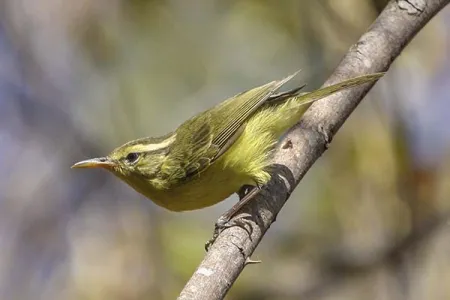CDU researcher involved in discovery of new bird species
A Charles Darwin University researcher has collaborated with a joint research team from the National University of Singapore (NUS) and Indonesian Institute of Science to investigate an unusual new songbird species.
The bird was named the Rote Leaf-Warbler after the island of Rote where it is found. The discovery was published recently in the journal Nature Scientific Reports.
Rote Island is a dry monsoon island with an area of 1200 square kilometres in eastern Indonesia. It is around 12 kilometres off the coast of Timor, and about 500 km northwest of Darwin.
The presence of a leaf-warbler of unknown identity on Rote was first noted in December 2004 by CDU Fellow Dr Colin Trainor.
For his PhD thesis Dr Trainor studied the wildlife of Timor-Leste and how the extent of forest cover impacted birds.
“A related part of the study examined how island area affects bird communities on many islands around Timor including Rote,” he said.
“I visited some of the best areas of remaining forest and recorded many birds for the first time on the island. One of them was a leaf warbler that has now been further researched by the scientists from Indonesia and Singapore,” Dr Trainor said.
The new species is part of a large group of Asian warblers but is unique among them in its unusually long bill. Researchers put the odd bill shape down to the need for the species to adapt to Rote’s dry landscapes, given that most other Asian leaf-warblers live in humid forest.
The scientific description was partly aided by comparisons using genome-wide data collected through Next-Generation Sequencing at NUS – thought to be the first time the technique has been used to confirm a new bird species.
Worldwide only five to ten bird species are described each year but this was the second new species recognised for Rote in the past year following identification of a new species of honeyeater, the Rote Myzomela.
While these developments have greatly improved knowledge of the biodiversity of Rote and highlighted the island’s global conservation importance, natural landscapes are under grave threat.
Dr Trainor said burgeoning human population was exerting ever-increasing pressures on Rote’s monsoon woodland and savannah areas has prompted the proposal that the bird be formally classified by the International Union for the Conservation of Nature as vulnerable.
“Less than 20 per cent of the dry forests are left on Rote, yet these are rich in bird life and home to two new species discovered in the past year. I think there is enormous value to protecting these areas,” he said.
“Rote is now a key birdwatching destination in eastern Indonesia, with perhaps 50-100 visitors each year. That will undoubtedly grow. Local Indonesian bird guides are emerging, so there are certainly economic possibilities associated with maintaining populations of endemic forest birds.”
Dr Trainor said it was an honour to be involved in the discovery and description of the Rote Leaf-Warbler.
“It’s great to be able to play a role in improving knowledge of evolutionary processes in eastern Indonesia,” he said.
